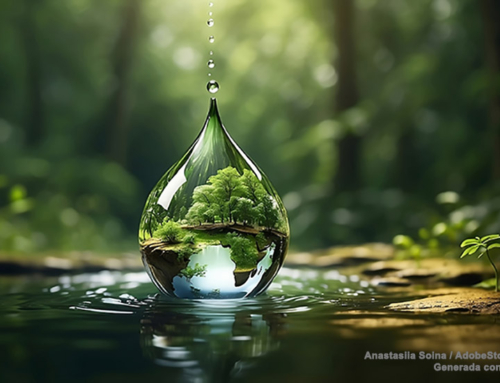The good news is that the road for the renewable, green, or clean fuels is clear. Already 13% of the world’s energy is produced by solar and wind energy, and the production of both continues to increase, according to data provided by CNN. The transition process is in full movement and has reached an inertia that makes it unstoppable.
It is true that the obstacles exist, especially from those who try to anchor themselves in the past and dodge the changes, but do not realize that they have no chance of winning the fight against progress. History teaches us that many times it has been tried to stop the great changes, but in the end they have always prevailed.
Today the news flows non-stop bringing information on the progress of new energy generators, free of CO2 emissions or other polluting gases. This means that in the relatively near future we could see a stop in the increase in global temperature, which so far, this 21st century has broken its records 17 times.
The energy transition is on the right track, something that we cannot say about the deforestation of the world’s main forests, where the standard-bearer is the long-suffering Amazon. There is also no progress in the degradation of the Earth’s five oceans. Both the forests and the oceans are the lungs of the world, nothing less than the two main regulators of carbon dioxide on the planet and consequently the Earth’s climate system. But this will be a topic for another day.
To verify what has been said about the energy transition, we have gathered a series of information related to the topic and present it in four categories: solar energy, wind energy, green hydrogen and electromobility, a quartet of superheroes who have arrived to defeat climate change. All these energies are free of greenhouse gas (GHG) emissions.
Wind power
Those shapes that look like toy windmills from afar are tall and thick concrete buildings, some with stairs and internal elevators, crowned by a machine room (wind turbine) capable of transforming wind energy into electricity.
Here are the five leading countries in wind energy:
1.-China 655.6 TW/H/ 2.-United States 383.6 TW/H/ 3.-Germany 117.7 TW/H/ 4.-Brazil 72.3 TW/ 5.-India 68.1 TW/H/ (1 TW/H = 1 terawatt hour = 1,000,000,000,000 watts/hour, that is, one trillion watts per hour).
Solar energy
A photovoltaic solar panel is made up of numerous small cells, usually made of crystalline silicon. One part has extra electrons and the other lacks. When sunlight, made up of photons, strikes the photovoltaic panel, a flow of electrical current is created between the layers.
These are the five leading solar energy countries:
1.-China 327 TW/H/ 2.-United States 165.4 TW/H/ 3.-Japan 86.3 TW/H/ 4.-India 68.3 TW/ 5.-Germany 49.0 TW/H/ (1 TW/H = 1 Tera Watt Hour = 1 000,000,000,000 watts/hour, i.e., one trillion watts per hour).
Green Hydrogen
Hydrogen, H2, is the most frequent element in the universe and the lightest. For this reason, it escapes from the Earth, since the terrestrial gravity does not have enough force to retain it, and therefore it is not found in a free state in nature. Instead, it is found in abundance in water molecules or in petroleum derivatives. For the H2 to be H2V, an electrolyzer must be used to separate the H2 from the O in the water, which must take its energy from green sources, such as solar power or wind power. In this way, green hydrogen (H2V) is obtained, which is the same as H2, but obtained by this procedure, free of GHG emissions.
The H2V will play a fundamental role in the energy transition and the substitution of oil, the fight against climate change and the decarbonization of the planet. The H2V will contribute to reduce GHG emissions, and therefore stop the progressive increase in the Earth’s temperature. On the other hand, in view of the insecurity arising from the war, Europe has decided to accelerate the energy transition and for this its fundamental commitment is H2V.
The role of H2V is very important, almost essential since it is used mainly in those cases in which solar and wind energy do not have enough strength to move heavy industries with high energy consumption. Instead, H2V is ideal for powering heavy industries such as power, steel, chemicals, cement factories, large construction sites, aviation, and shipping industries.
Good news about Green Hydrogen
Plug to Build Large-Scale Green Hydrogen Generation Plant in Europe at Port of Antwerp-Bruges – Bloomberg
Rolls-Royce to develop mtu electrolyzer for green hydrogen production – Incentive Mind
Shell Decides to Build Europe’s Largest Green Hydrogen Plant – Bloomberg
China breaks record for world’s largest electrolyzer – Rethink
USA Hydrogen Program Hydrogen Energy Gov
Australian electrolyzer breakthrough promises world’s cheapest green hydrogen – Renew Economy
The Shell oil company has already begun to take steps to join the energy transition club. The oil giant signed an agreement with Germany’s Thyssenkrupp to carry out the construction of a huge 200 MW hydrogen electrolysis plant in the port of Rotterdam, in the Netherlands.
The Ningxia Baofeng Energy Group, a company operating in China “mainly engaged in the production of coal and the sale of chemical products, has launched one of the largest green hydrogen projects in the world (…), has managed to launch running a huge 150 MW alkaline electrolyser powered by solar panels…”
Recommended article The oil companies could go from villains to heroes of the decarbonization, by SGK-PLANET.
Electromobility
The good news related to electromobility is plentiful. Today, numbers of electric vehicles (EVs), of almost all makes and models, are on the world’s roads. The advances are obvious (the attractive nature of the product and the advertising help a lot in this), which results in the general conviction that combustion engine vehicles have their days numbered. Consumers, manufacturers, and countries are clear that EVs will displace conventional transport. This is important and hopefully soon we can say the same about the other factors that induce climate change.
The silent and decarbonized car is the hope of a world without smog, noise or gases that increase diseases and global warming. The great transformation of the automobile industry was reflected by a representative of General Motors: “there will be more changes in the automobile sector in the next five or ten years than in the last fifty”. Taken from our Magazine all about the Electric Car.
Good news about electric vehicles.
EU Parliament approves ban on new fossil-fuel cars from 2035 – FRANCE 24 with AFP, AP, and REUTERS
EV registrations in Europe more than doubled in 2020 – JATO
Full EVs 65% of all new-car sales in Norway – Engineering Group
Sony, Honda sign JV to sell electric cars by 2025 – Reuters
UK car industry calls for EV charger mandate, regulatory oversight – Reuters
If electromobility links can become free customers, it would be an incentive for…electric vehicles – BN Americas
Everything is given for the energy transition to be carried out successfully and in less time than previously thought. The good thing is that the four classes of products that we have presented here are being produced in parallel, simultaneously, a clear indicator that in a few years, we may possibly see effective changes in the climate system of our planet.
Sandor Alejandro Gerendas-Kiss







Leave A Comment